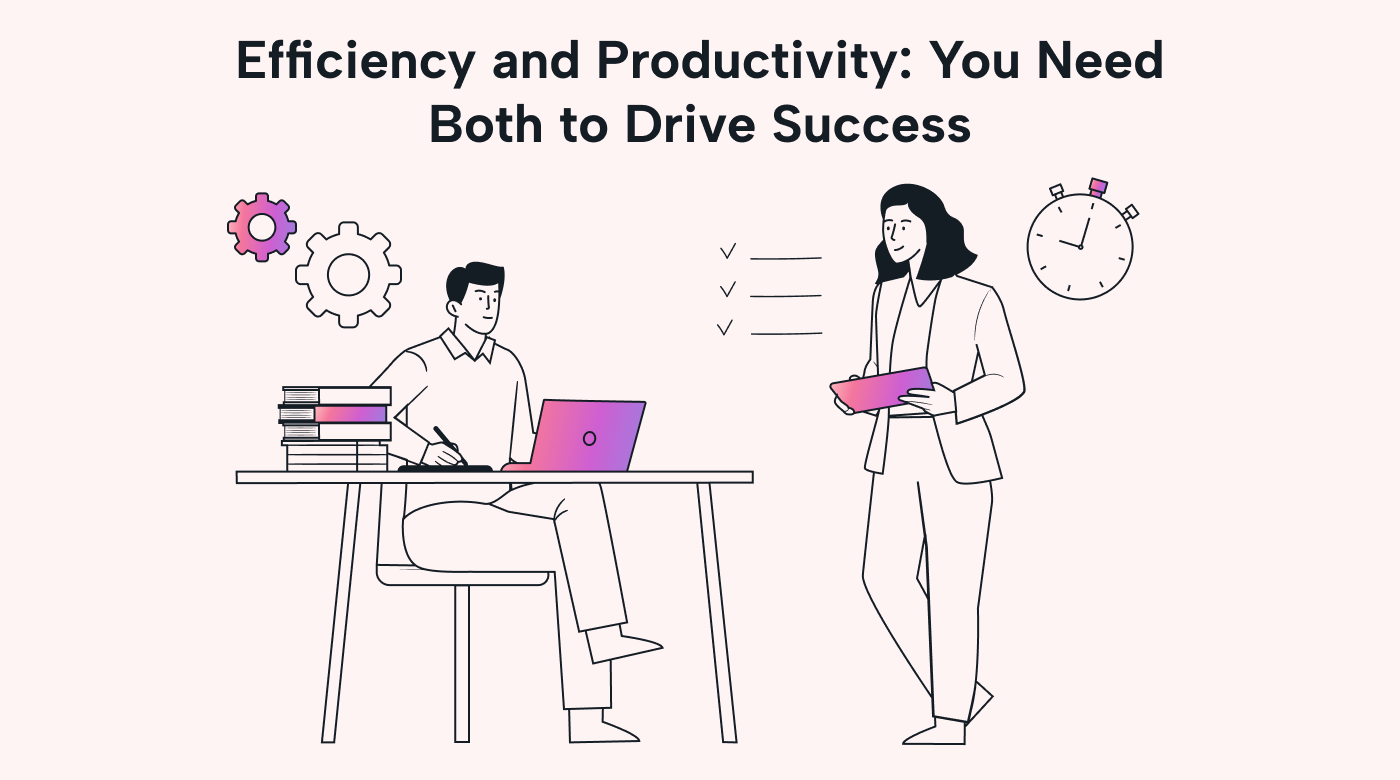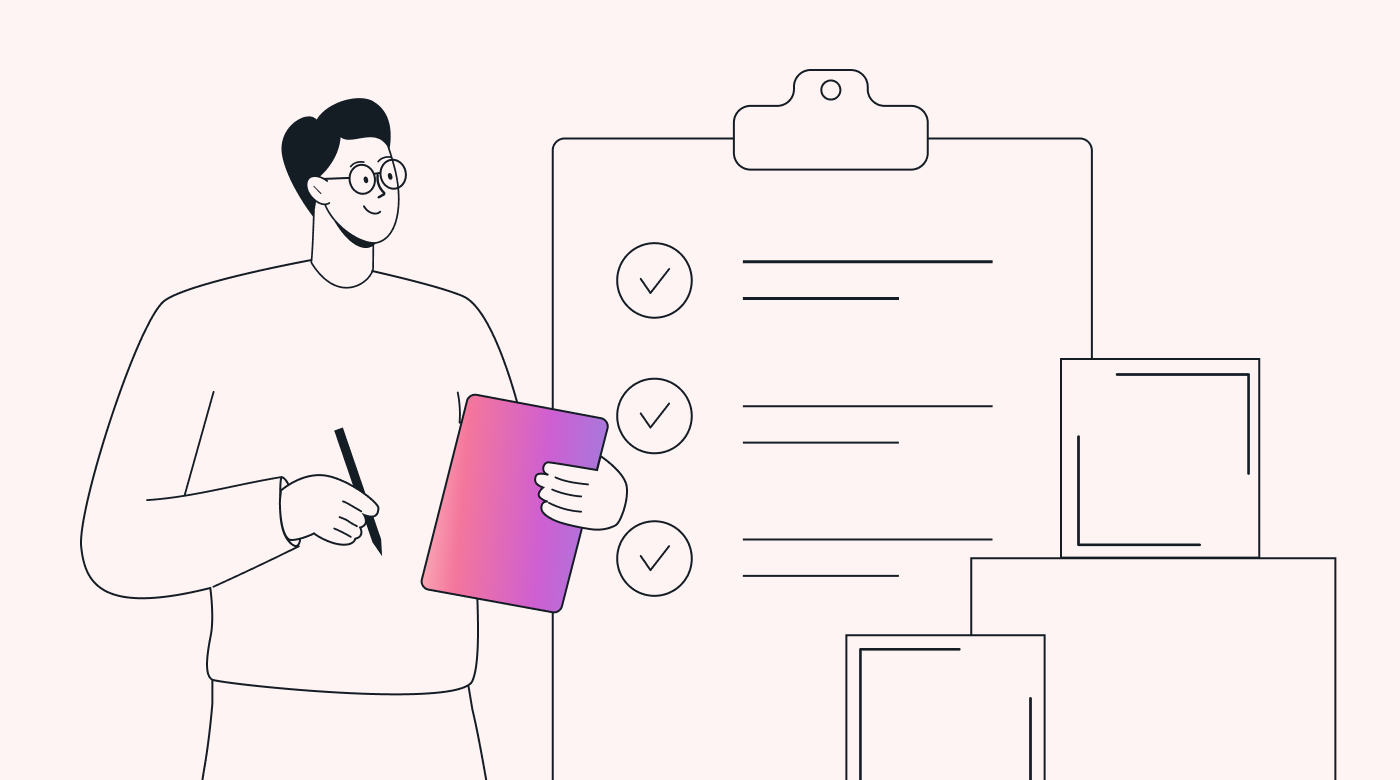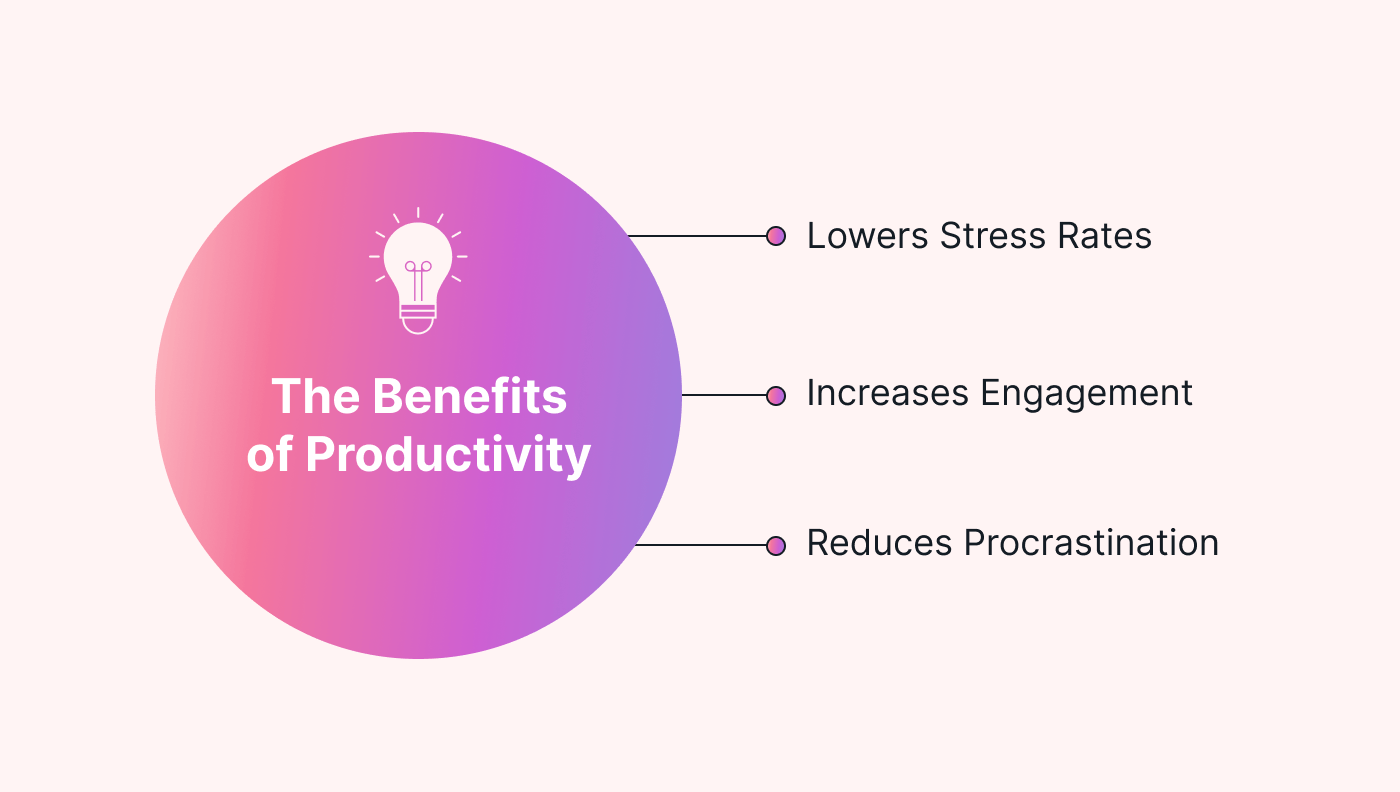Are you looking for ways to unlock your potential at work? Do you want to learn how to get more done during the workday?
Productivity can be a tough nut to crack. But once you understand how to use different tools and techniques to become more efficient with your time, nothing can stop you.
Whether you’re looking to up your game professionally or simply figure out why you struggle to complete projects on time, we’ll show you how to exceed expectations in the workplace through enhanced productivity.
Knowing how to increase your productivity level starts with understanding what productivity is. Read on to learn everything you need to know about productivity — and how Motion can help you make better use of your time.
What is productivity?
Productivity refers to the amount of work an individual or group completes and how well they utilize various resources to do so. Think of it as the ratio of input (the resources) to output (the “product”).
In other words, the more you get out of what you put in, the higher your productivity.
Productivity is often lumped in with performance and efficiency. However, these terms don’t quite mean the same thing. Let’s dig into some of their differences.
Productivity vs. performance
If productivity is the relationship between work input and output, what is performance? And which of the two is more important?
Simply put, performance is the quality of your work. It’s when you do your work well or hit a specific goal.
It’s easy to see why productivity is closely associated with performance. If you don’t perform your work in a skillful way, you will not reach a high level of output. You need both performance and productivity to be successful.
Here’s a simple example: imagine your trade is bookbinding. To create each book, you have five set tasks:
Step 1: Stack the paper and staple each stack together to create folios.
Step 2: Cut the cover boards for the front and back of the book.
Step 3: Cut out the book spine.
Step 4: Glue the cover boards and spine in place.
Step 5: Glue the paper folios along the spine between the covers.
Performing four out of five tasks well would indicate high performance. You cut, glue, and staple beautifully. But without the finished product (the measure of output for the work), your productivity would be very low because you didn’t produce anything.
You could say productivity and performance are both important. Without performance, you won’t produce anything worthwhile. But without productivity, you won’t produce anything.
Productivity vs. efficiency
Efficiency is all about working smarter, not harder — getting the most value possible out of the smallest amount of input or work resources.
While efficiency focuses on process improvement, productivity is more about outcome.
In our bookbinding example from earlier, efficiency might look like streamlining the production process to make more than one set of book covers and spines at a time. This could be done by cutting the covers and spines for four books simultaneously.
In this case, the work resource you’d save is time; you’d still produce the finished book outputs, but you’d do so with more efficiency.
 |
So, which is more important: productivity or efficiency?
Too much emphasis on efficiency can lead to cutting corners when it comes to the time, effort, or resources needed for work to be completed — and that can impact the quality of deliverables down the line.
However, productivity without efficiency can contribute to potential burnout as you struggle to churn out more work than you can reasonably accommodate. The bookbinder in our example, for instance, can only make so many books during each shift.
Like performance, you need a balance of productivity and efficiency in your practice for success. The two are equally important.
Measuring productivity in the workplace
Workplace productivity isn’t just about the bottom line. It’s also about avoiding burnout. Employees who report experiencing burnout are 2.6 times more likely to be actively seeking another job, so getting productivity right is a big deal.
Productivity can help you stay engaged in the workplace and maintain positive working relationships with others.
Measuring productivity can help you determine where you’re at versus where you want to be, as well as locate pain points in your practice. Once you’ve measured your personal level of productivity, you can make improvements based on those findings.
Here are just a few ways you can measure your personal productivity in the workplace:
Measure your goals and objectives and the progress you make toward them
It’s a good idea to make sure your goals are always SMART — specific, measurable, achievable, relevant, and time-bound.
A good example of a SMART goal for a bookbinding shop would be improving your processes to increase your book production by 5,000 by the end of Q2.
Measure the quantity of the work you complete
Quantity refers to the number of tasks or deliverables completed. For our bookbinding example, this could mean the number of books you complete per day. Will you make your goals if you stay on your current trajectory?
Measure the quality of the work you complete
Quality of products and services, of course, is a crucial factor for any business. Did your product/service meet your standards?
Your relationships with customers are more likely to be positive if you give them high-quality products or services. And positive customer relationships lead to more sales down the line.
Tips for increasing your productivity
Switch up your time and task management habits, experiment with some time-tested techniques, and find trustworthy tools to be an even more productive person at work.
 |
Time management
- Time blocking: Limit distractions and interruptions so you can focus. Schedule blocks of focus time and set nonurgent notifications to Do Not Disturb.
- Breaks: Build time into your schedule for breaks between daily tasks. Sixty-four percent of employees who take “micro-breaks” experience higher productivity than those who don’t.
Task management
- Prioritize and delegate: This goes back to working smarter, not harder. Delegate tasks to the right teammates so you can focus on those that match your skillset and bandwidth.
- Avoid multitasking: Multitasking increases your chances of making errors and becoming stressed. Instead, focus on one task at a time.
Techniques
- 80/20 Rule: Eighty percent of results come from 20% of input, which means you can do more with less. Start by identifying the 20% of your work that contributes to 80% of your desired results. Then, prioritize that 20%. This will reduce your overall workload while increasing your productivity.
- Pomodoro Technique: This popular productivity technique involves breaking work into intervals of about 25 minutes each, with short breaks in between. This can help you manage particularly challenging tasks more productively and reduce your chances of experiencing stress.
- Utilize productivity apps: Motion can increase your productivity by 137% and save you two hours per day.
 |
Tools
Leverage technology to improve and streamline your work.
Motion, for instance, can help increase your productivity in three key areas:
- Task management: Motion can prioritize your most important tasks for you and automatically adjust your schedule for changes in priorities.
- Time management: Motion automatically adds tasks and meetings to your calendar.
- Communication management: Motion helps you collaborate seamlessly in real time through mentions and comments.
 |
Start being more productive today
Now that you’re an expert in productivity, why it matters, and how to measure it, it’s time to start beefing up your practice at work. Incorporate some of our proven tips and tools into your workplace to increase your productivity today.
A task management tool like Motion is one of the simplest ways to increase productivity. It prioritizes your work for you automatically so that you don’t have to.
Start working smarter and boosting your productivity at work — sign up for your 7-day free trial today.





